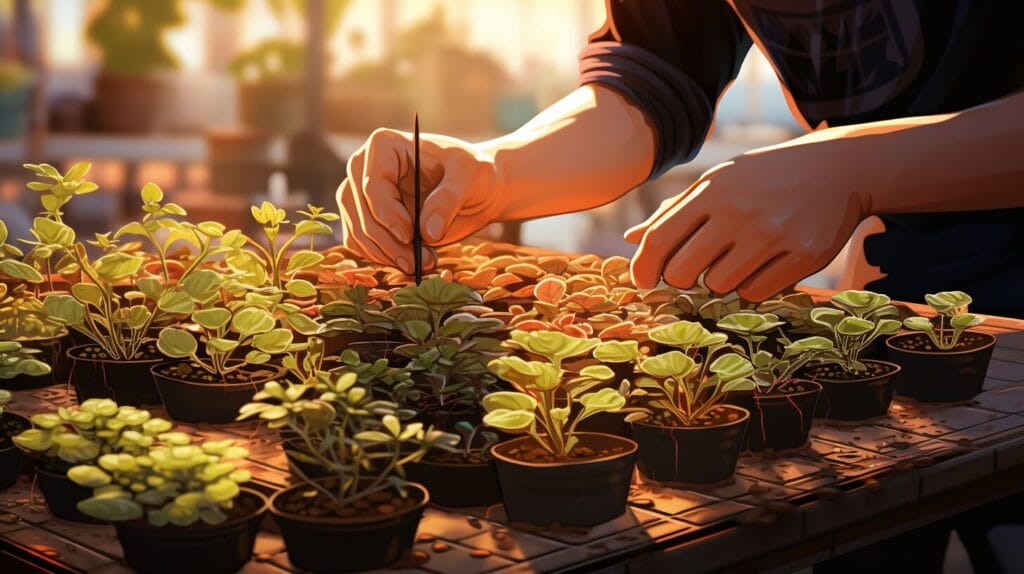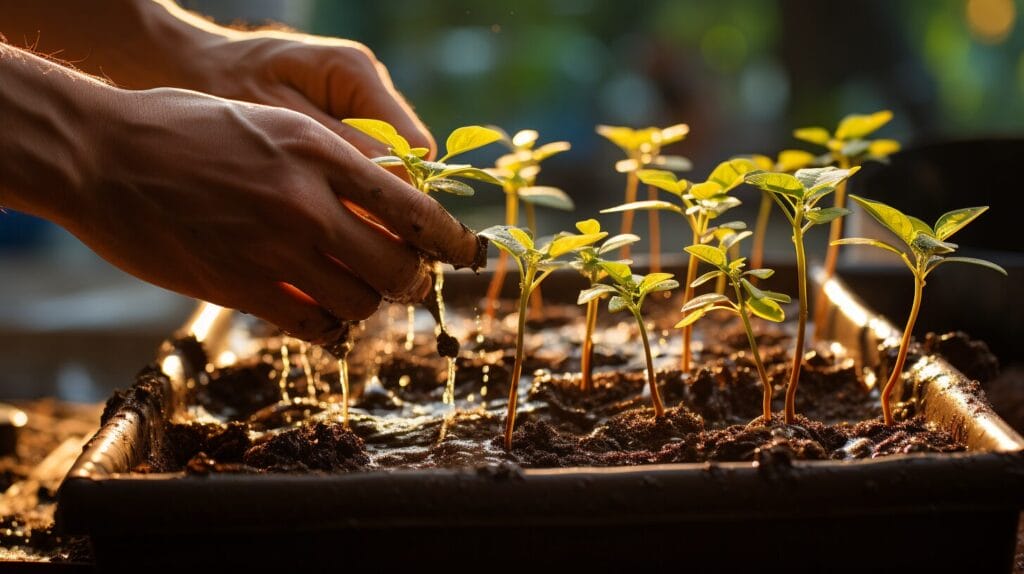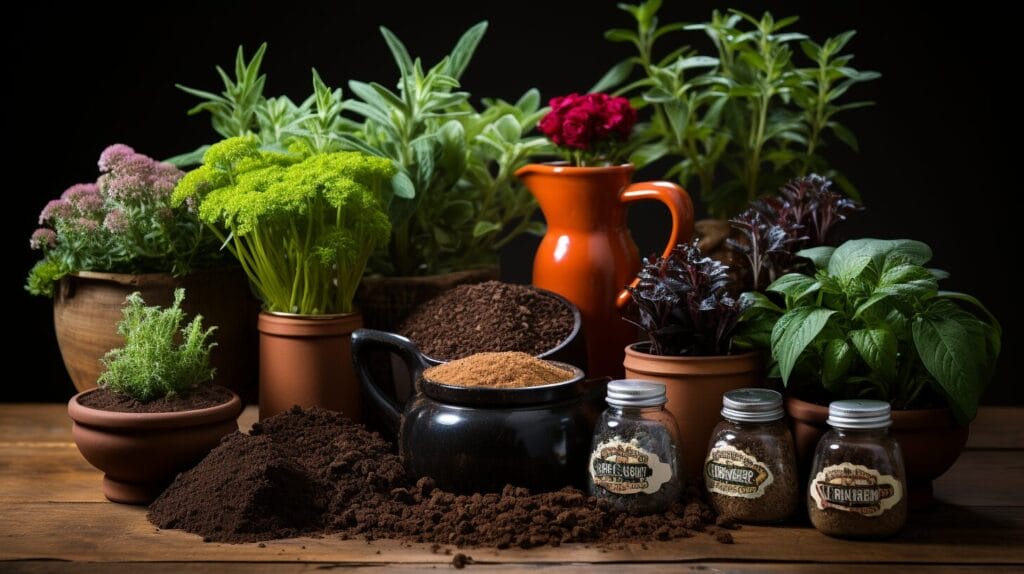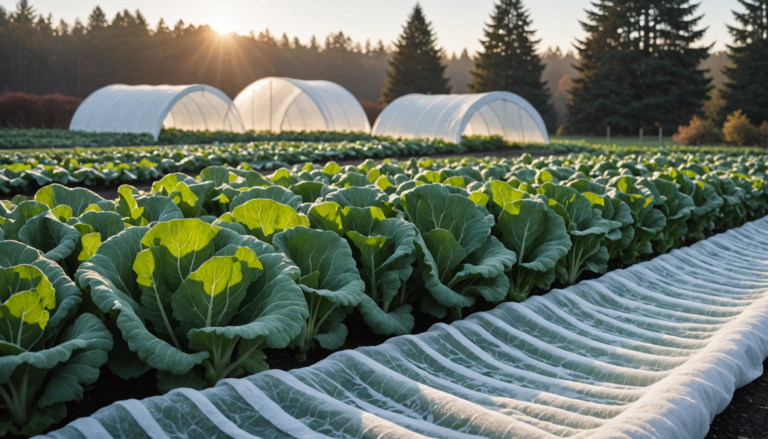As we gear up for the planting season, horticulture aficionados worldwide are eagerly exploring the most effective methods to care for their seedlings. The Eliot Coleman Soil Block Recipe suggests a unique alternative to conventional gardening practices. This method involves the amalgamation of peat moss, compost and a specific blend of nutrients to adequately nourish seedlings.
This article explores the nuances of soil blocks, aiming to equip you with the knowledge to create a thriving garden.
Key Takeaways
- Soil blocks enhance plant health, promote strong root systems, and reduce transplant shock.
- The mix includes peat moss, compost, perlite or sand, and colloidal phosphate, which provide moisture retention, nutrients, aeration, and fertility.
- Seedlings grown in soil blocks adapt better to garden soil and show improved vigor and growth, with less reliance on plastic trays.
- Eliot Coleman’s techniques have been instrumental in the success of soil-blocking practices.
The Science and Art of Soil Blocking

Eliot Coleman’s soil-blocking technique merges scientific principles with sustainable gardening. By using a specialized mix, we create an environment that fosters strong root growth and plant development. The density and nutrient balance of the soil mix are crucial, providing texture and nutrition for a healthy start.
Soil blocking transforms our approach, moving away from plastic seedling trays that may hinder growth. Seeds start life in a compact block, allowing for a healthy root system ready for transplanting with minimal shock.
Ingredients for a Successful Soil Blocking Mix

A well-prepared soil block mix is essential for nurturing young seedlings. The mix should include:
- Peat: Offers structure and water retention.
- Compost: Enriches with nutrients and beneficial microorganisms.
- Perlite: Enhances aeration and drainage.
- Base Fertilizer: Provides balanced nutrition.
Adjust proportions based on specific conditions and plant needs for optimal results.
Creating Eliot Coleman Soil block recipe

To make soil blocks:
- Mix peat, compost, perlite, and base fertilizer, sifting to remove large particles.
- Dampen the mix to the consistency of a wrung-out sponge.
- Fill the soil block maker, pressing firmly.
- Release blocks onto a tray and repeat as needed.
- Plant seeds in the blocks, covering lightly with the mix.
Best Practices for Seedling Care in Soil Blocks

Proper care ensures robust seedlings:
- Maintain consistent moisture with gentle watering.
- Control temperature between 65-75°F (18-24°C) for optimal germination.
- Provide 12-16 hours of bright, indirect light daily.
- Begin fertilization with a half-strength liquid organic fertilizer after true leaves develop.
- Regularly monitor seedlings for early detection of issues.
Successful Gardening with Soil Blocking Techniques

Eliot Coleman’s method has revolutionized gardening. Soil blocks allow roots to grow without becoming root-bound, ensuring a smooth transition to the garden. Our seedlings emerge stronger and adapt better to their new environment. This sustainable practice also reduces plastic usage.
For beginners, the preparation may seem daunting, but it becomes straightforward with practice. A successful garden starts with healthy soil, and soil blocking is integral to achieving that.
Conclusion
We’ve explored the world of soil blocking, inspired by Eliot Coleman’s wisdom. With hands in the soil and hearts committed to growth, we’re poised to see our seedlings prosper.
This sustainable method deepens our earth connection, promising thriving gardens and greener futures.
Frequently Asked Questions
What is Eliot Coleman’s soil block recipe and its significance for seedling trays?
Eliot Coleman’s soil block recipe is a specific mix used by growers to make their soil blocks for starting seeds indoors. The recipe incorporates a blend of potting soil, clay soil, sand or perlite, and coconut coir.
This mix is thoroughly combined and moistened with warm water, then packed into a soil blocker to form the blocks. The soil blocks provide an excellent environment for seeds to germinate and grow before they are transplanted.
What is the importance of the soil block mix in seed-starting?
The mix for soil blocks is vital in seed-starting because it holds the right amount of moisture and has the right texture to support seedling growth.
A well-prepared soil block mix will contain a balanced amount of nutrients to help the seeds germinate and grow into healthy seedlings. The size of soil used in blocks is also catered to the size of the seedlings being grown.
Is there any recommended potting soil for Eliot Coleman’s soil block recipe?
Eliot Coleman’s soil-blocking recipe incorporates organic potting soil that’s rich in compost. It also includes clay soil for the added minerals.
Blood meal and greensand can also be added to enrich the blocking mix. Moreover, the soil should be sifted through a soil sifter before use to remove any excess soil or clumps.
What’s the purpose of the blocker in the soil block mix preparation?
A blocker is used to shape the soil-blocking mix into compact blocks of a specific size. Soil blockers come in varying sizes, allowing the gardener to make many soil blocks at once or a few larger ones, depending on their needs.
The blocker also ensures the soil blocks stay compact and maintain their shape, providing a uniform growing environment for the seedlings.
How to choose the right size soil block, and how can one use a large soil block?
The size of the soil block to be used depends on the size of the seeds and the space they require to develop their root system. For fine seeds, tiny soil blocks of about ¾-inch would be used.
Larger seeds, such as those of tomatoes, would need larger soil blocks around 2-inch in size. For something like a pumpkin seed, one might use a large soil block of 4 inches or more.







